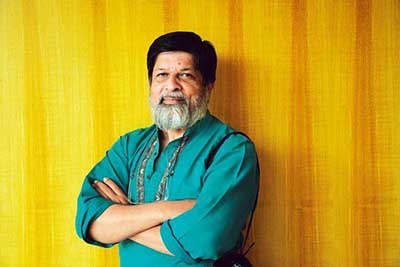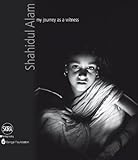Let?s start with your own book, My Journey as a Witness, which contains over 100 photographs. How would you describe it?
My book documents the journey of an activist as a photographer. I suppose it?s also a history book ? the photography movement in Bangladesh was immersed in its political struggles. I was on the streets during the protests against?
General Ershad?s regime. There was repression and people were killed. When Ershad announced he was stepping down on 5 December 1990, it was a major public victory, because the people had brought down a very powerful general. It was a phenomenal thing to be part of and observe. The experience led to my career in photojournalism.
As a photographer I?m a very late starter. I come from a middle-class home, and most middle-class men in Bangladesh are expected to take on respectable professions. Photography doesn?t fall into that category. I?ve always been a very political animal. I wanted to play a role in working towards social equality, in my country and globally. The media seemed the most sensible place to do that.
Photojournalists in Bangladesh continue to face repression. Your own exhibition,?Crossfire, on extrajudicial killings was banned by the government on the basis that it would create ?anarchy?, and you received death threats. The closure was criticised by Amnesty International and later retracted. Do you believe photojournalists enjoy greater freedoms today than in the past?
I think the level of repression has increased in Bangladesh. It?s ironic, in the sense that we now live in a democracy ? to the extent that there are regular elections.
Your book also contains images of the English aristocracy ? why were they of interest to you as a photographer?
I shot those photographs for an Arts Council project. I felt it was important to take pictures of the English aristocracy. By and large, what I?d read about photography was about European conquests ? how anthropologists, writers and sociologists came to the colonies to index and categorise us, by documenting the width of our cranium, the length of our penis, and all other attributes. ?This is what you are,? we were told. So I thought perhaps I should turn this thing around. The project?s theme was ?work?, and I wanted to photograph people of leisure. Work is seen in terms of activity, but not in terms of the power structures that determine it. I thought it would be interesting to look at the people who decide what work is and how it is regulated, but rarely have to do manual work themselves. It wasn?t an easy project ? the better-off have doors to close on your face. It was difficult to explain what I wanted to do and still be allowed to take the pictures.

By Peter Magubane
Your second recommendation is?Soweto by Peter Magubane, who was the first black South African to win a photography award in the country. What makes this book special?
A lot of work about conflict has been undertaken by well-known war photographers. But?Soweto is the work of a black photographer living in the townships reserved for non-whites during apartheid. This book documents his struggle. He had close links with Nelson Mandela and was very involved in the struggle against apartheid. And as he was witnessing it he was also persecuted, and spent a lot of time in jail. Photography was much more dangerous as a black person.
Over a sustained period of time, and with a great deal of honesty and nearness, Magubane produced stunning images ? not just in terms of their action and strength, but also because he showed what was really happening in Soweto by capturing the relationship between blacks and whites. Take, for example, his photograph of a group of naked black men with their hands held up above their heads. Inspections such as these were standard procedure before allowing black workers to enter a mine. The humiliation and degradation of the search was, I suspect, part of the process to dehumanise them. Magubane?s work stands out as being the voice of the people.


 Image by?
Image by?
